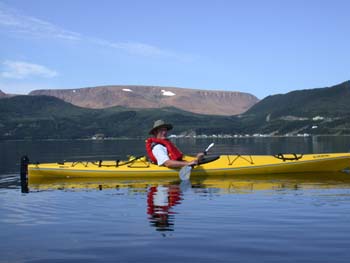| LOCATION
The Tablelands, a geologic formation of global significance, sit on the
west coast of Newfoundland, inside Gros Morne National Park. Due to their
lack of vegetation and unusual shape (at right), the Tablelands stand
out for miles around, drawing tourists and geologists alike. We spent
the warm, sunnny afternoon of our seventh day examining the rocks and
taking in the desert-like landscape, and resisting the collectine urge!
Geologically speaking, the Tablelands lie in the Western Zone of Newfoundland,
not far from Green Gardens Trail (visit our Green Gardens Trail Page).
They rise above many of the nearby mountains, remaining snow capped throughout
most or all of the year. |
 |